<Back to Index>
- Lieutenant General of the New Zealand Military Forces Bernard Cyril Freyberg, 1889
- Captain of the New Zealand Military Forces Charles Hazlitt Upham, 1908
PAGE SPONSOR
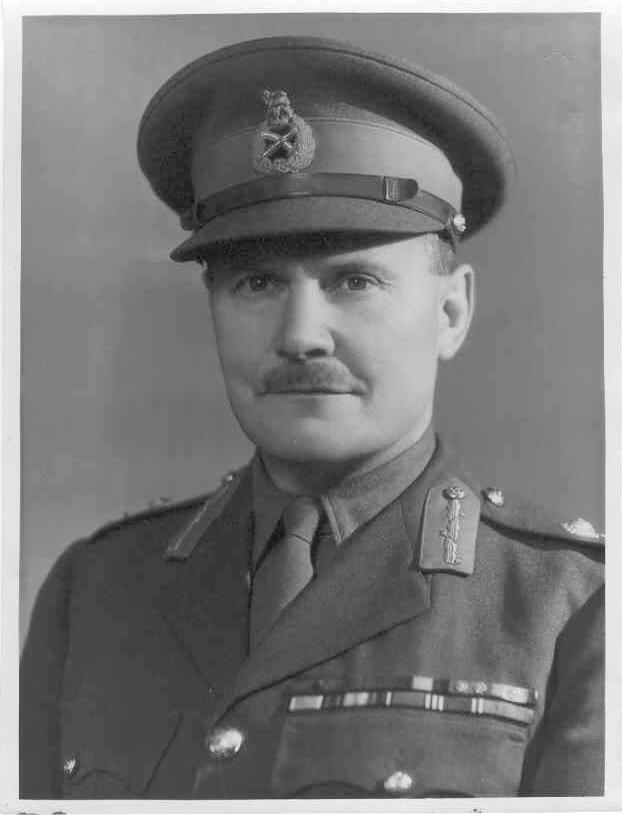
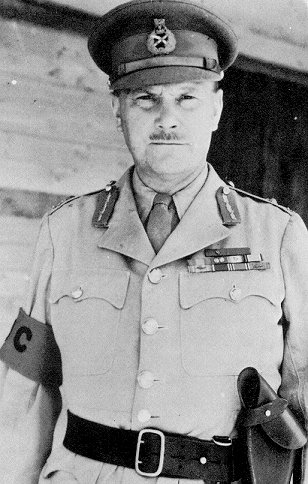
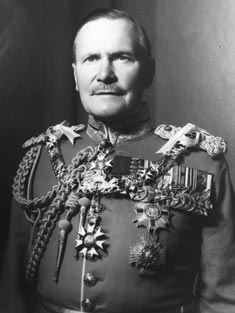
Lieutenant-General Bernard Cyril Freyberg, 1st Baron Freyberg VC, GCMG, KCB, KBE, DSO & Three Bars (21 March 1889 – 4 July 1963), was a British born New Zealand Victoria Cross recipient and soldier who later served as the seventh Governor - General of New Zealand.
A veteran of the Mexican Revolution, he became an officer in the British Army during the First World War. Freyberg took part in the beach landings during the Gallipoli Campaign and the youngest general in the British Army during the First World War, later serving on the Western Front where he was decorated with the Victoria Cross and three DSOs, making him one of the most highly decorated British Empire officers of the First World War. He liked to be in the thick of action — Churchill called him "the Salamander" due to his ability to pass through fire unharmed.
During the Second World War, he commanded the New Zealand Expeditionary Force in the Battle of Crete, the North African Campaign and the Italian Campaign. Freyberg was involved in defeat in the Battle of Greece, defeated again as the Allied commander in the Battle of Crete and performed successfully commanding the New Zealand division in North Africa, including the Battle of El Alamein.
In Italy, he was defeated again at the Second Battle of Cassino as a corps commander, but later relieved Padua and Venice, and was first to enter Trieste, where he successfully confronted Josip Broz Tito's Partisans. By the end of the Second World War, Freyberg had spent ten and a half years fighting the Germans.
Freyberg, born in Richmond, London, UK, moved to New Zealand with his parents at the age of two. He attended Wellington College from 1897 to 1904.
A strong swimmer, he won the New Zealand 100 yards championship in 1906 and in 1910.
On 22 May 1911, he gained formal registration as a dentist. He worked as an assistant dentist in Morrinsville and later practiced in Hamilton and in Levin. While in Morrinsville he was asked to take up a subalternship in the local Territorial Army unit, but he did not succeed in gaining the King's commission.
Freyberg left New Zealand in March 1914. Records exist of him in San Francisco and in Mexico, where he may have taken part in the civil war then raging in that country, reportedly becoming a captain under Pancho Villa. Upon hearing of the outbreak of war in Europe in August 1914, he traveled to England via Los Angeles (where he won a swimming competition to earn money to cross the United States) and New York (where he won a prizefight to earn money to cross the Atlantic).
In late 1914 Freyberg met Winston Churchill, then First Lord of the Admiralty, and persuaded him to grant him a Royal Naval Volunteer Reserve commission in the Hood Battalion of the newly constituted Royal Naval Division.
In 1915 Freyberg became involved in the Dardanelles campaign. During the initial landings by Allied troops following the unsuccessful attempt to force the straits by sea, Freyberg swam ashore in the Gulf of Saros. Once ashore, he began lighting flares so as to distract the defending Turkish forces from the real landings taking place at Gallipoli. Despite coming under heavy Turkish fire, he returned safely from this outing, and for his action he received the Distinguished Service Order. He received serious wounds on several occasions and left the peninsula when his division evacuated in January 1916.
In May 1916 Freyberg was transferred to the British Army as a captain in the Queen's (Royal West Surrey) Regiment. However, he remained with the Hood Battalion as a seconded temporary major and went with them to France. During the final stages of the Battle of the Somme, when commanding a battalion as a temporary lieutenant colonel, he so distinguished himself in the capture of Beaucourt village that he was awarded the Victoria Cross. On 13 November 1916 at Beaucourt - sur - Ancre, France, after Freyberg's battalion had carried the initial attack through the enemy's front system of trenches, he rallied and re-formed his own much disorganized men and some others, and led them on a successful assault of the second objective, during which he suffered two wounds, but remained in command and held his ground throughout the day and the following night. When reinforced the next morning he attacked and captured a strongly fortified village, taking 500 prisoners. Though wounded twice more, the second time severely, Freyberg refused to leave the line until he had issued final instructions. The citation for the award, published in the London Gazette in December 1916, describes the events concluding with:
The personality, valour and utter contempt of danger on the part of this single Officer enabled the lodgment in the most advanced objective of the Corps to be permanently held, and on this point d'appui the line was eventually formed.
During his time on the Western Front Freyberg continued to lead by example. His leadership had a cost however: Freyberg received nine wounds during his service in France, and men who served with him later in his career said hardly a part of his body did not have scars.
Freyberg gained promotion to the rank of temporary Brigadier General (although he still had the permanent rank of only Captain) and took command of a brigade in the 58th Division in April 1917, which reportedly made him the youngest general officer in the British Army. He was awarded a Companion of the Order of St Michael and St George the same year. In September a shell exploding at his feet inflicted the worst of his many wounds. When he resumed duty in January 1918 he again commanded 88th Brigade in 29th Division, performing with distinction during the German offensive of March – April 1918. He won a bar to his DSO in September that year.
Freyberg ended the war by leading a cavalry squadron detached from 7th Dragoon Guards to seize a bridge at Lessines, which was achieved one minute before the armistice came into effect, thus earning him a third DSO. By the end of the war Freyberg had added the French Croix de Guerre to his name, as well receiving five Mentions in Dispatches after his escapade at Saros. With his VC and three DSOs, he ranked as among the most highly decorated British Empire officers of the First World War.
Early in 1919 Freyberg was granted a regular commission in the Grenadier Guards and settled into peacetime soldiering, as well as attempts to swim the English Channel. From 1921 to 1925 he was a staff officer in the headquarters of the 44th Division. He suffered health problems arising from his many wounds, and as part of his convalescence he visited New Zealand in 1921.
On 14 June 1922 he married Barbara McLaren (a daughter of Sir Herbert Jekyll and the widow of Hon. Francis McLaren) at St Martha on the Hill. Barbara had two children from her previous marriage, and she and Freyberg later had a son, Paul (1923 – 1993).
In the general election of 1922 he stood unsuccessfully (coming second) as an Independent Liberal candidate for Cardiff South. He represented New Zealand on the International Olympic Committee in 1928 – 30. Promoted to the permanent rank of major in 1927 (having been a substantive captain since 1916), he held a GSO2 staff appointment at Headquarters Eastern Command until February 1929 when he was promoted lieutenant colonel and appointed to command 1st Battalion, Manchester Regiment.
In 1931 he was promoted colonel (with seniority backdated to 1922) and was appointed Assistant Quartermaster General of Southern Command. In September 1933 he moved to a GSO1 posting at the War Office before being promoted major general in July 1934. With this promotion, at the age of only 45, he seemed headed for the highest echelons of the army. However, medical examinations prior to a posting in India revealed a heart problem. Despite strenuous efforts to surmount this, Freyberg, who was made a Companion of the Order of the Bath in 1936, was obliged to retire on 16 October 1937.
The British Army classified Freyberg as unfit for active service in 1937. However, following the outbreak of war in September 1939 he returned to its active list in December as a specially employed major general. Following an approach from the New Zealand government, Freyberg offered his services and subsequently gained appointment as commander of the 2nd New Zealand Expeditionary Force and of the New Zealand 2nd Division.
In the chaos of the retreat from the Greek mainland campaign of 1941, London gave Freyberg command of the Allied forces during the Battle of Crete. Controversy surrounds his use of ULTRA intelligence messages during this battle.
Promoted to Lieutenant General and knighted via Knight Commander of the Order of the British Empire, Freyberg continued to command the New Zealand 2nd Division through the North African and Italian campaigns of the British Eighth Army. He had an excellent reputation as a divisional level tactician. Churchill described Freyberg as his "salamander" due to his love of fire and wanting to be always in the middle of the action; an exploding German shell wounded Freyberg at the Battle of Marsa Matruh in June 1942, but he soon returned to the battlefield. Freyberg however disagreed strongly with his superior, General Claude Auchinleck, and insisted that as a commander of a national contingent he had the right to refuse orders if those orders ran counter to the New Zealand national interest. On the other hand, Freyberg enjoyed a good relationship with General Bernard Montgomery, who thought highly of the experienced New Zealander.
In the climactic Battle of El Alamein in October – November 1942, the New Zealand Division played a vital part in the Allies’ final breakthrough; for his leadership of it Freyberg was immediately upgraded to a Knight Commander of the Order of the Bath. During the ensuing pursuit of the Axis forces across North Africa to Tunisia, where they surrendered, he led the New Zealanders on a series of well executed left hooks designed to outflank successive enemy defense lines. In April and May 1943 Freyberg briefly commanded X Corps.
Freyberg was injured in an aircraft accident in September 1944. After six weeks in hospital he returned to command the New Zealand Division in its final operations, which involved a series of river crossings and an advance of 250 miles in three weeks. By the time of Germany’s capitulation, the New Zealanders had reached Trieste, having already liberated both Padua and Venice, where there was, briefly, a tense standoff with Yugoslav partisans. This success earned him a third bar to his DSO in July 1945, and he was also made a commander of the US Legion of Merit.
Freyberg had excelled in planning set - piece attacks, such as at Operation Supercharge at Alamein, Operation Supercharge II at Tebaga Gap, and in the storming of the Senio line in 1945. However, the two occasions that Freyberg commanded at Corps level — at Crete and Monte Cassino — counted as less successful. Throughout the war he showed a disdain for danger. He showed notable concern for the welfare of his soldiers, taking a common sense attitude to discipline and ensuring the establishment of social facilities for his men. He had become a very popular commander with the New Zealand soldiers by the time he left his command in 1945.
Freyberg is closely associated with the controversial decision to bomb the ancient monastery at Monte Cassino, Italy, in February 1944. Freyberg, commanding the troops which fought what later became known as the Second and Third Battles of Monte Cassino, became convinced the abbey, founded in 529 A.D., was being used as military stronghold. The analysis of one of Freyberg's divisional commanders, Francis Tuker, concluded in a memo to Freyberg that regardless of whether the monastery was currently occupied by the Germans, it should be demolished to prevent its effective occupation. He also pointed out that with 150 foot (45 m) high walls made of masonry at least 10 feet (3 m) thick, there was no practical means for field engineers to deal with the place, and that bombing with "blockbuster" bombs would be the only solution since 1,000 pound bombs would be "next to useless". The theater commander, General Harold Alexander, agreed to the bombing (which did not employ blockbuster bombs) and the ruins were occupied by German forces which held the position until 18 May. Following the war, the abbot of the monastery and other monks confirmed that German troops had not yet occupied the inside of the abbey and it was not being used for military purposes.
Freyberg relinquished command of the New Zealand division, on 22 November 1945 having accepted an invitation to become Governor - General of New Zealand – the first with a New Zealand upbringing. He left London for his new post on 3 May 1946, after being made a Knight Grand Cross of the Order of St Michael and St George. His links with the army were cut when his retirement took effect on 10 September 1946. Freyberg served as Governor - General of New Zealand from 1946 until 1952. In this post he played a very active role, visiting all parts of New Zealand and its dependencies.
The Crown raised Freyberg to the peerage as Baron Freyberg of Wellington in New Zealand and of Munstead in the County of Surrey in 1951.
After his term as New Zealand Governor - General had finished Freyberg returned to England where he sat frequently in the House of Lords. On 1 March 1953 he became the Deputy Constable and Lieutenant - Governor of Windsor Castle; he took up residence in the Norman Gateway the following year.
In 1955, Freyberg High School in Palmerston North, New Zealand opened.
Freyberg died at Windsor on 4 July 1963 following the rupture of one of his war wounds, and was buried in the churchyard of St Martha on the Hill near Guildford, Surrey. His wife is buried at his side, and their son, who had been awarded the Military Cross, at the end of their graves.
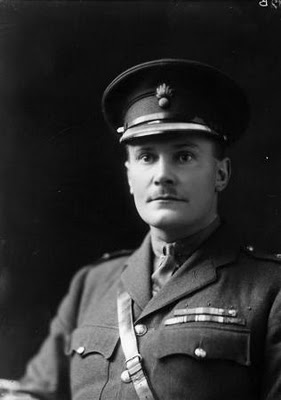
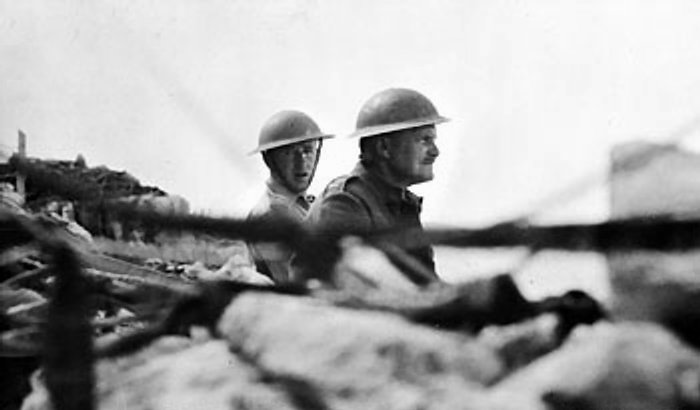
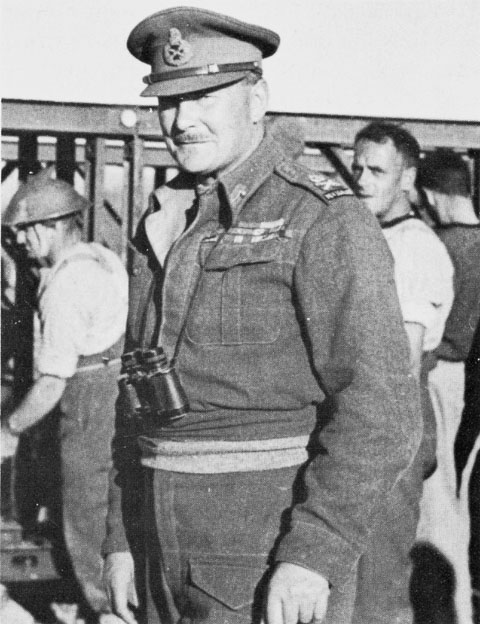
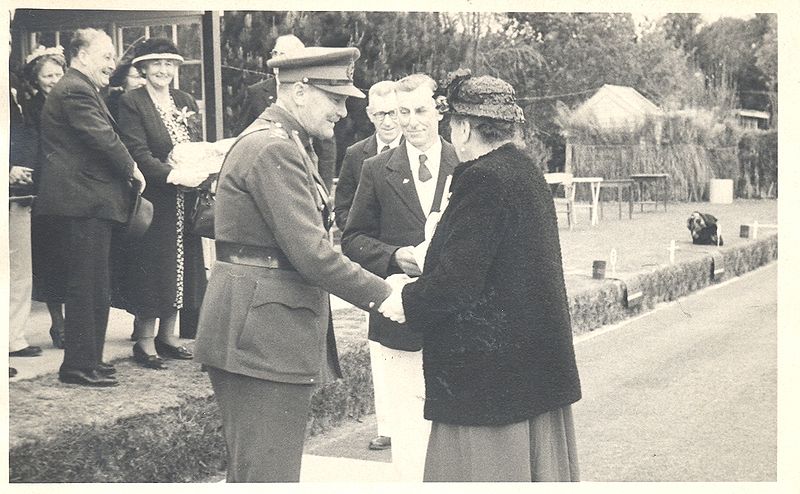
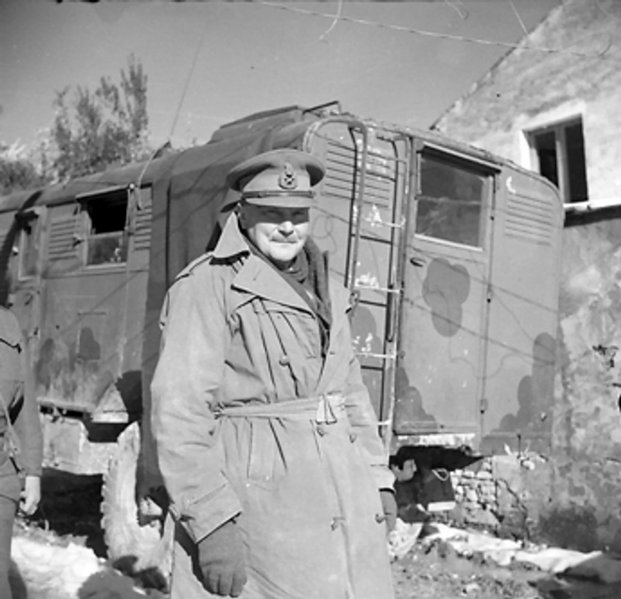
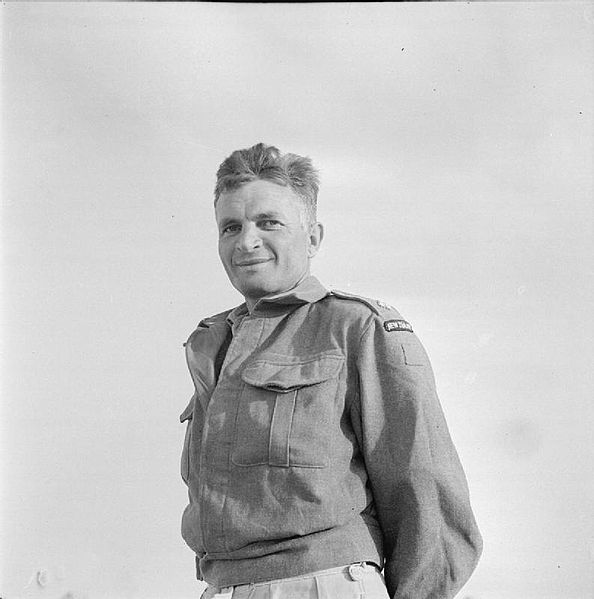
Captain Charles Hazlitt Upham VC and Bar (21 September 1908 – 22 November 1994) was a New Zealand soldier who earned the Victoria Cross twice during the Second World War: in Crete in May 1941, and at Ruweisat Ridge, Egypt, in July 1942. He was only the third person to receive the VC twice, the only person to receive two VCs during the Second World War and the only combat soldier to receive the award twice. As a result, Upham is often described as the most highly decorated Commonwealth soldier of that war, as the VC is the Commonwealth's highest award for extreme gallantry in the face of the enemy.
Upham was born at 32 Gloucester Street in Central Christchurch on 21 September 1908, the son of John Hazlitt Upham, a lawyer, and his wife, Agatha Mary Coates. He boarded at Waihi School, Winchester, South Canterbury, between 1917 and 1922 and at Christ's College, Christchurch, from 1923 - 27. He attended Canterbury Agricultural College (presently known as Lincoln University) where he earned a diploma in agriculture in 1930.
He worked first as a sheep farmer, later as manager, and then valuing farms for the New Zealand government. In 1937 he joined the Valuation Department as assistant district valuer in Timaru, and the following year he became engaged to Mary (Molly) Eileen McTamney (a distant relative of Noel Chavasse, VC and Bar). In 1939 he returned to Lincoln to complete a diploma in valuation and farm management.
Upham enlisted in the 2nd NZ Expeditionary Force (2NZEF) at the age of 30 in September 1939 and was posted to the 20th Canterbury - Otago Battalion, part of the New Zealand Division. Despite the fact that he already had five years experience in New Zealand's Territorial Army, in which he held the rank of sergeant, he signed on as a private. He was soon promoted to temporary lance corporal, but initially declined a place in an Officer Cadet Training Unit (OCTU). In December he was promoted to sergeant and a week later sailed for Egypt. In July 1940 he was finally persuaded to join an OCTU.
In March 1941 Upham's battalion left for Greece and then withdrew to Crete, and it was here that he was wounded in the action, from 22 to 30 May 1941, that gained him his first VC. When informed of the award, his first response was: "It's meant for the men."
Citation
War Office, 14th October, 1941.The KING has been graciously pleased to approve of awards of the Victoria Cross to the undermentioned: —
Second Lieutenant Charles Hazlitt Upham (8077), New Zealand Military Forces.
During the operations in Crete this officer performed a series of remarkable exploits, showing outstanding leadership, tactical skill and utter indifference to danger.
He showed superb coolness, great skill and dash and complete disregard of danger. His conduct and leadership inspired his whole platoon to fight magnificently throughout, and in fact was an inspiration to the Battalion.
He commanded a forward platoon in the attack on Maleme on 22nd May and fought his way forward for over 3,000 yards unsupported by any other arms and against a defence strongly organised in depth. During this operation his platoon destroyed numerous enemy posts but on three occasions sections were temporarily held up.
In the first case, under a heavy fire from a machine gun nest he advanced to close quarters with pistol and grenades, so demoralizing the occupants that his section was able to "mop up" with ease.
Another of his sections was then held up by two machine guns in a house. He went in and placed a grenade through a window, destroying the crew of one machine gun and several others, the other machine gun being silenced by the fire of his sections.
In the third case he crawled to within 15 yards of an M.G. post and killed the gunners with a grenade.
When his Company withdrew from Maleme he helped to carry a wounded man out under fire, and together with another officer rallied more men together to carry other wounded men out.
He was then sent to bring in a company which had become isolated. With a Corporal he went through enemy territory over 600 yards, killing two Germans on the way, found the company, and brought it back to the Battalion's new position. But for this action it would have been completely cut off.
During the following two days his platoon occupied an exposed position on forward slopes and was continuously under fire. Second Lieutenant Upham was blown over by one mortar shell, and painfully wounded by a piece of shrapnel behind the left shoulder, by another. He disregarded this wound and remained on duty. He also received a bullet in the foot which he later removed in Egypt.
At Galatas on 25th May his platoon was heavily engaged and came under severe mortar and machine gun fire. While his platoon stopped under cover of a ridge Second - Lieutenant Upham went forward, observed the enemy and brought the platoon forward when the Germans advanced. They killed over 40 with fire and grenades and forced the remainder to fall back.
When his platoon was ordered to retire he sent it back under the platoon Sergeant and he went back to warn other troops that they were being cut off. When he came out himself he was fired on by two Germans. He fell and shammed dead, then crawled into a position and having the use of only one arm rested his rifle in the fork of a tree and as the Germans came forward he killed them both. The second to fall actually hit the muzzle of the rifle as he fell.
On 30th May at Sphakia his platoon was ordered to deal with a party of the enemy which had advanced down a ravine to near Force Headquarters. Though in an exhausted condition he climbed the steep hill to the west of the ravine, placed his men in positions on the slope overlooking the ravine and himself went to the top with a Bren Gun and two riflemen. By clever tactics he induced the enemy party to expose itself and then at a range of 500 yards shot 22 and caused the remainder to disperse in panic.
During the whole of the operations he suffered from dysentery and was able to eat very little, in addition to being wounded and bruised.—London Gazette, 14 October 1941
Upham was evacuated to Egypt, now promoted to captain. He received a Bar to his VC for his actions on 14 – 15 July 1942, during the First Battle of El Alamein.
Citation
War Office, 26th September, 1945.The KING has been graciously pleased to approve the award of a Bar to the VICTORIA CROSS to: —
Captain Charles Hazlitt UPHAM, V.C. (8077), New Zealand Military Forces.
Captain C. H. Upham, V.C., was commanding a Company of New Zealand troops in the Western Desert during the operations which culminated in the attack on El Ruweisat Ridge on the night of 14th - 15th July, 1942.
In spite of being twice wounded, once when crossing open ground swept by enemy fire to inspect his forward sections guarding our mine fields and again when he completely destroyed an entire truck load of German soldiers with hand grenades, Captain Upham insisted on remaining with his men to take part in the final assault.
During the opening stages of the attack on the ridge Captain Upham's Company formed part of the reserve battalion, but, when communications with the forward troops broke down and he was instructed to send up an officer to report on the progress of the attack, he went out himself armed with a Spandau gun and, after several sharp encounters with enemy machine gun posts, succeeded in bringing back the required information.
Just before dawn the reserve battalion was ordered forward, but, when it had almost reached its objective, very heavy fire was encountered from a strongly defended enemy locality, consisting of four machine gun posts and a number of tanks.
Captain Upham, without hesitation, at once led his Company in a determined attack on the two nearest strongpoints on the left flank of the sector. His voice could be heard above the din of battle cheering on his men and, in spite of the fierce resistance of the enemy and the heavy casualties on both sides, the objective was captured.
Captain Upham, during the engagement, himself destroyed a German tank and several guns and vehicles with grenades and although he was shot through the elbow by a machine gun bullet and had his arm broken, he went on again to a forward position and brought back some of his men who had become isolated. He continued to dominate the situation until his men had beaten off a violent enemy counter - attack and consolidated the vital position which they had won under his inspiring leadership.
Exhausted by pain from his wound and weak from loss of blood Captain Upham was then removed to the Regimental Aid Post but immediately his wound had been dressed he returned to his men, remaining with them all day long under heavy enemy artillery and mortar fire, until he was again severely wounded and being now unable to move fell into the hands of the enemy when, his gallant Company having been reduced to only six survivors, his position was finally overrun by superior enemy forces, in spite of the outstanding gallantry and magnificent leadership shown by Captain Upham.
The Victoria Cross was conferred on Captain Upham for conspicuous bravery during the operations in Crete in May, 1941, and the award was announced in the London Gazette dated 14th October, 1941.—London Gazette, 26 September 1945
With this award Upham became the third man to be awarded a Bar to the VC. The previous recipients were Captain Arthur Martin - Leake and Captain Noel Godfrey Chavasse, both doctors serving in the Royal Army Medical Corps. Martin - Leake received his VC for rescuing wounded under fire in the Second Boer War, and the Bar for similar actions in the First World War. Chavasse was similarly decorated for two such actions in the First World War, subsequently dying of wounds received during his second action. Neither of these men were combatants, so Upham remains the only fighting soldier to have been decorated with the VC and Bar.
Having been taken prisoner of war (POW), he was sent to an Italian hospital to recuperate but attempted to escape numerous times before being branded "dangerous" by the Germans.
One attempt to escape occurred when a group of POWs were being transported in open trucks through Italy. Upham jumped from the truck at a bend and managed to get 400 yards (370 m) away before being recaptured. He had broken an ankle in jumping from the moving truck.
Another attempt occurred when he was being moved between prison camps on a civilian train while guarded by two Germans. Upham was only allowed to visit the toilet when the train was traveling at high speed, to prevent him from jumping through a window. Nevertheless, Upham prized open the toilet window and jumped onto the tracks, knocking himself unconscious.
On a third occasion, he tried to escape a camp by climbing its fences in broad daylight. He became entangled in barbed wire when he fell down between the two fences. When a prison guard pointed a pistol at his head and threatened to shoot, Upham calmly ignored him and lit a cigarette. This scene was photographed by the Germans as "evidence" and later reprinted in his biography (Mark of the Lion, by Kenneth Sandford).
After this incident, Upham was considered extremely dangerous and was placed in solitary confinement. He was only allowed to exercise alone, while accompanied by two armed guards and while covered by a machine gun in a tower. Despite these precautions, Upham bolted from his little courtyard, straight through the German barracks and out through the front gate of the camp. The guard in the machine gun tower later told other prisoners that he refrained from shooting Upham out of sheer respect, and as he could see German soldiers coming up the road who he expected to capture Upham.
Upham was soon recaptured and sent to the infamous Oflag IV-C (Colditz) on 14 October 1944.
When Colditz Castle was liberated by American forces, most of the inmates made their own way home immediately. Upham joined an American Unit, was armed and equipped, and wanted to fight the Germans. Upham was keen to see action again, but was instead sent to Britain where he was reunited with Molly McTamney, who was then serving as a nurse. They were married at New Milton, Hampshire, on 20 June 1945. He returned to NZ in early September, and Molly followed him in December.
King George VI had invested Upham with his first Victoria Cross at Buckingham Palace on 11 May 1945. When the recommendation was made for a second VC, the King remarked to Major General Howard Kippenberger that a bar to the cross would be "very unusual indeed" and inquired firmly, "Does he deserve it?" Kippenberger replied, "In my respectful opinion, sir, Upham won the VC several times over."
Upham was also Mentioned in Dispatches on 14 November 1946.
After the war Upham returned to NZ, and the community raised £10,000 to buy him a farm. However, he declined and the money went into the C.H. Upham Scholarship for children of ex-servicemen to study at Lincoln College or the University of Canterbury.
He obtained a war rehabilitation loan and bought a farm on Conway Flat, Hundalee, North Canterbury. It is said that for the remainder of his life, Upham would allow no German car on to his property.
Although somewhat hampered by his injuries, he became a successful farmer and served on the board of governors of Christ’s College for nearly 20 years. He and Molly had three daughters, and lived on their farm until January 1994, when Upham's poor health forced them to retire to Christchurch. In 1992 he was presented with the Order of Honor by the Government of Greece, in recognition of his service in the Battles of Greece and Crete. He died in Canterbury on 22 November 1994, surrounded by Molly and his daughters. His funeral in Christchurch Cathedral was conducted with full military honors, the streets of Christchurch were lined by over 5,000 people and he was buried in the graveyard of St Paul's Church Papanui. His death was also marked by a memorial service on 5 May 1995 in London's St Martin - in - the - Fields church, attended by representatives for the Royal Family, senior New Zealand government and political figures, senior members of the British and New Zealand armed forces, Valerian Freyberg, 3rd Baron Freyberg, grandson of the commander of the Allied forces in Crete and 7th Governor General of New Zealand, representatives of veterans' organizations and other VC and George Cross holders.
A bronze statue stands outside the Hurunui District Council buildings in Amberley, North Canterbury, depicting Charles Upham "the observer".
His VC and Bar was on display at the QEII Army Memorial Museum, Waiouru, until its theft in December 2007. In November 2006 the medals had been sold by Upham's daughters to the Imperial War Museum for an undisclosed sum. However, as NZ legislation prohibits the export of such historic items, the Imperial War Museum agreed to a permanent loan of the medals to the Waiouru Army Museum. On 2 December 2007, Upham's VC was among nine stolen from locked, reinforced glass cabinets at the Museum. On 16 February 2008 New Zealand Police announced all the medals had been recovered as a result of a NZ $300,000 reward offered by Michael Ashcroft and Tom Sturgess.